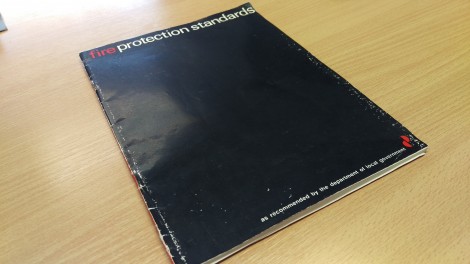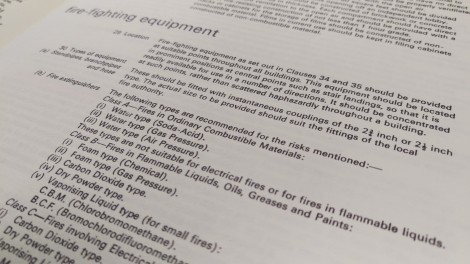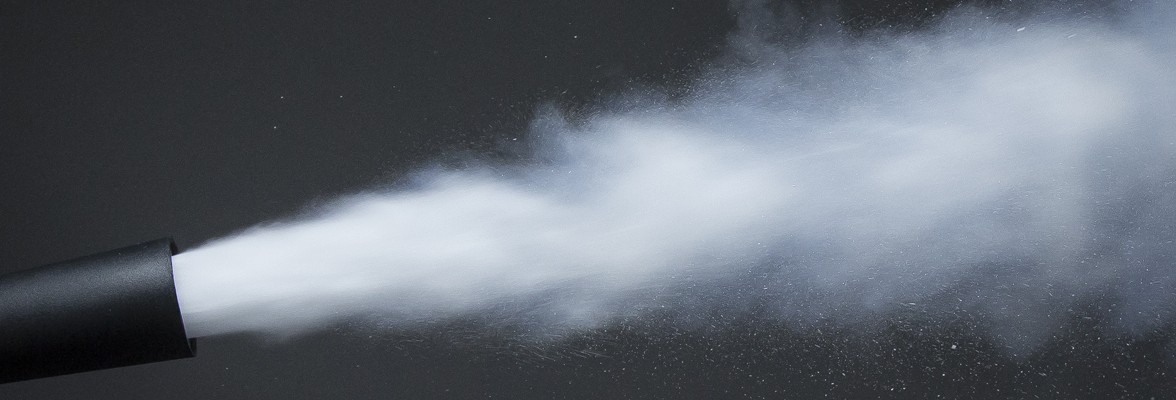KSS Fire Suppression & The Restaurant Association of Ireland.
Posted on 14 Mar 2018
Posted on 14 Mar 2018
Posted on 7 Jan 2016
For Course Dates Contact Rob @ rob@ddwholesale.ie
Looking to get competent in the New Fire Extinguisher Standards 291:2015 .
Get you or your staff Trained in the 3 day Mechanical Fire Safety Engineering Workshop.
As “Irelands Only” Third Party Accredited Mechanical Fire Safety Engineering Three Day workshop which is titled The Fire Safety Workshop Series, each student on a course whom the Instructors assess as competent shall be issued by Mr Brendan Kavanagh, Chartered Safety Practitioner a “JOIFF” accredited certificate of Competence signed by an authorised person.
Incorporating:
Applicable to and Why: The course is applicable to all who are actively involved with the Recommendation/Selection, Installation, Inspection, Service and Maintenance of the above listed equipment The course is designed to help understand the Statutory Safety Legislation, Regulations & Competency obligations within the specific areas. The scope of the Fire Extinguisher maintenance workshop is based on best practice in the Irish Fire Protection industry with a baseline on technical standards incorporating Irish Standard 291 (2015) and Irish Standard EN 3 (2007). The programme style is based on a balance between practical workshop experience over forty years and a baseline of the current (2014) research and development of Fire Protection standards and specification development
Facilitator: Course Director & Tutor Mr Brendan Kavanagh M.I.F.S.M – M.I.E.T. – C.M.I.O.S.H – G.I Fire Engineers – M.I.H.E.E.M Chartered Fire Safety Practitioner & Professional Fire Prevention Officer, has been approved as a JOIFF accredited Training Provider
Posted on 18 Nov 2015
looking to get competent in Portable Fire Extinguisher Standards, IS 291:2015 is on the way and there is no better time than now to get you or your staff Trained in the 3 day Mechanical Fire Safety Engineering Workshop. As “Irelands Only” Third Party Accredited Mechanical Fire Safety Engineering Three Day workshop which is titled The Fire Safety Workshop Series, each student on a course whom the Instructors assess as competent shall be issued by Mr Brendan Kavanagh, Chartered Safety Practitioner a “JOIFF” accredited certificate of Competence signed by an authorised person. Incorporating:
Applicable to and Why: The course is applicable to all who are actively involved with the Recommendation/Selection, Installation, Inspection, Service and Maintenance of the above listed equipment The course is designed to help understand the Statutory Safety Legislation, Regulations & Competency obligations within the specific areas. The scope of the Fire Extinguisher maintenance workshop is based on best practice in the Irish Fire Protection industry with a baseline on technical standards incorporating Irish Standard 291 (2015) and Irish Standard EN 3 (2007). The programme style is based on a balance between practical workshop experience over forty years and a baseline of the current (2014) research and development of Fire Protection standards and specification development Facilitator: Course Director & Tutor Mr Brendan Kavanagh M.I.F.S.M – M.I.E.T. – C.M.I.O.S.H – G.I Fire Engineers – M.I.H.E.E.M Chartered Fire Safety Practitioner & Professional Fire Prevention Officer
Accreditation & Certification INTERNATIONAL ORGANISATION FOR INDUSTRIAL HAZARD MANAGEMENT Full JOIFF accreditation requires an examination of the three pillars that make up effective provision of training, courses/programmes, Instruction and establishment/organisation including facilities. All aspects together must be to the required standard and the applicant organisation must demonstrate proprietary ownership of all 3 pillars for JOIFF accreditation to be awarded. read more about JOIFF http://joiff.com/ Workshop style Conference room electronic with supporting practical exercises. It is recommended that participants bring a Laptop or similar device capable of receiving Wi-Fi, (Wi-Fi facility available in the hotel) all of the workshop presentation slides and guides are published and distributed electronically in PDF. Format All participants will be required to subscribe to a risk management and safety culture which requires all participants during practical workshop sessions and demonstrations to ensure their personal safety in respect to Eye, Hand and Foot protection All of the Workshop sessions will commence at 0900hrs and finish at 1700hrs each day. As the Workshop is certified and third party accredited by JOIFF which requires assessment of the participants during the workshop sessions and whereby each participant will be required to undertake project work between attendance days which will form a significant aspect of the assessment to enable the presentation of an individual certificate . To book your place(s) on the course please email to info@firetrade.ie or call Jeff on mobile: 087 2613295 Note: Firetrade.ie is fully independent and is not a member or accredited by any third party Association.
Posted on 21 Sep 2015

 .
.
In 1950 a committee set up by the Minister for Local Government produced a code of standards as a guide. These standards were revised in 1967 “fire protection standards” as recommended by the department of local government were published by the Stationary Office. Available to be purchased through any Bookseller, or directly from the Government Publications Sales Office, G.P.O Arcade, Dublin 1, for the princely sum of .20p…….So it appears we have been at this for some time.
Posted on 20 Aug 2015
The NSAI with consent from the Minister of Jobs, Enterprise and Innovation have revoked IS 291:2002 “The use, siting, inspection and maintenance of portable fire extinguishers”
IS 291:2015 “Selection, commissioning, installation, inspection and maintenance of portable fire extinguishers” has been declared to be a “Standard Specification”
please see link below:
Posted on 18 Aug 2015
looking to get competent in Portable Fire Extinguisher Standards, IS 291:2015 is on the way and there is no better time than now to get you or your staff Trained in the 3 day Mechanical Fire Safety Engineering Workshop.
As “Irelands Only” Third Party Accredited Mechanical Fire Safety Engineering Three Day workshop which is titled The Fire Safety Workshop Series, each student on a course whom the Instructors assess as competent shall be issued by Mr Brendan Kavanagh, Chartered Safety Practitioner a “JOIFF” accredited certificate of Competence signed by an authorised person.
Incorporating:
Applicable to and Why:
The course is applicable to all who are actively involved with the Recommendation/Selection, Installation, Inspection, Service and Maintenance of the above listed equipment
The course is designed to help understand the Statutory Safety Legislation, Regulations & Competency obligations within the specific areas.
The scope of the Fire Extinguisher maintenance workshop is based on best practice in the Irish Fire Protection industry with a baseline on technical standards incorporating Irish Standard 291 (2002) and Irish Standard EN 3 (2007).
The programme style is based on a balance between practical workshop experience over forty years and a baseline of the current (2014) research and development of Fire Protection standards and specification development
Facilitator:
Course Director & Tutor Mr Brendan Kavanagh
M.I.F.S.M – M.I.E.T. – C.M.I.O.S.H – G.I Fire Engineers – M.I.H.E.E.M
Chartered Fire Safety Practitioner &
Professional Fire Prevention Officer
Accreditation & Certification
INTERNATIONAL ORGANISATION FOR INDUSTRIAL HAZARD MANAGEMENT
Full JOIFF accreditation requires an examination of the three pillars that make up effective provision of training, courses/programmes, Instruction and establishment/organisation including facilities. All aspects together must be to the required standard and the applicant organisation must demonstrate proprietary ownership of all 3 pillars for JOIFF accreditation to be awarded. read more about JOIFF http://joiff.com/
Workshop style
Conference room electronic with supporting practical exercises. It is recommended that participants bring a Laptop or similar device capable of receiving Wi-Fi, (Wi-Fi facility available in the hotel) all of the workshop presentation slides and guides are published and distributed electronically in PDF. Format
All participants will be required to subscribe to a risk management and safety culture which requires all participants during practical workshop sessions and demonstrations to ensure their personal safety in respect to Eye, Hand and Foot protection
All of the Workshop sessions will commence at 0900hrs and finish at 1700hrs each day. As the Workshop is certified and third party accredited by JOIFF which requires assessment of the participants during the workshop sessions and whereby each participant will be required to undertake project work between attendance days which will form a significant aspect of the assessment to enable the presentation of an individual certificate .
To book your place(s) on the course please email to info@firetrade.ie or call Luke on mobile: 087 271 8195
Note: Firetrade.ie is fully independent and is not a member or accredited by any third party Association.
Posted on 22 May 2015
A definition for “conductivity” is “the property or power of conducting heat, electricity or sound.” This pertains to CO2 hoses in that the wire strands inside the hose must be connected and in good shape from one end of the hose to the other. There are many ways to measure conductivity. You can use a meter that is used in the electrical industry, remove hose from the extinguisher, put meter setting on OHM or Continuity, touch one end on the metal with one prong and the same on the far end with the other prong, any reading other then “0″ is a fail. Most commonly used in the US is a small unit that is battery operated with a metal point and LED light. You grab one end of the hose by the metal and touch the other end of the hose with the pointed tip. If the light comes on you have continuity from one end to the other. What that conductivity test doesn’t tell you is how many of those strands are connected or if they are in good shape. After examining the hose we also determined that the rubber that is the outside protective layer for those strands appeared to be in good shape. No weather checks, cracking, or bulges to lead us to believe that there was a problem under the surface. They were still in good enough shape to allow for a “passing” conductivity test but not good enough to withstand the cold and back pressure within the hose when the discharged CO2 gas hit the diverter at the end of the hose. So what should someone performing annual maintenance in such a situation do? Even after fulfilling all the requirements for the proper servicing and testing of a CO2 hose, it would be good to take one or two more steps. You need to grab that hose with both hands, leaving about three to four inches between your hands, and flex that hose. Keep moving your hands down the hose until you have done the entire length of hose. If you come across a crack or hard spot that maybe you couldn’t see without flexing the hose or hear a crunching-type noise then you will know that the hose you are visually inspecting is deteriorating under the rubber protective layer. This would be a good time to replace that hose.
Posted on 1 Apr 2015
For more than three decades, Halon 1301 and Halon 1211 played a key role in the fire protection of airport facilities and aircraft, and they continue to provide fire protection in critical applications such as cargo bay protection. However, clean agent Halon replacements are gradually finding their way into on-board aircraft applications including engine nacelle and lavatory trash receptacle protection systems, and are ideally suited for the protection of ground-based mission critical assets.
For more than three decades, Halon 1301 (CF3Br) and Halon 1211 (CF2BrCl) have been widely employed for the protection of airport facilities and aircraft. The Halons are “clean” agents, leaving no corrosive or abrasive residues after their use, thus eliminating the secondary (non-fire) damage associated with extinguishing agents such as water, dry chemicals or foams. In addition, the Halons are non-conductors of electricity; hence they are applicable for the protection of electronic equipment. Halon 1211, characterised by a low vapour pressure, is most suitable as a streaming agent in flight-line applications and in portable extinguishers, whereas the more volatile Halon 1301 is best suited as a total flooding suppression agent for the protection of engine nacelles, auxiliary power units (APUs), cargo bays, control rooms and facilities housing mission critical equipment.
Due to their unique combination of chemical and physical properties, Halon 1301 and Halon 1211 served as nearly ideal fire suppression agents. However, due to their implication in the destruction of stratospheric ozone, the Montreal Protocol of 1987 identified Halon 1301 and Halon 1211 as two of numerous compounds requiring limitations of use and production, and an amendment to the original Protocol resulted in the halting of Halon production on January 1, 1994.
Clean Agent Fire Protection for Airports
Airport fire protection needs include the following:
Posted on 12 Jan 2015
Mechanical Fire Safety Engineering Three Day workshop
2015
Course Title:
Third Party Accredited Mechanical Fire Safety Engineering Three Day workshop which are titled Fire Safety Workshop Series 2015
Incorporating:
Applicable to and Why:
The course is applicable to all who are actively involved with the Recommendation/Selection, Installation, Inspection, Service and Maintenance of the above listed equipment
The course is designed to help understand the Statutory Safety Legislation, Regulations & Competency obligations within the specific areas.
The scope of the Fire Extinguisher maintenance workshop is based on best practice in the Irish Fire Protection industry with a baseline on technical standards incorporating Irish Standard 291 (2002) and Irish Standard EN 3 (2007).
The programme style is based on a balance between practical workshop experience over forty years and a baseline of the current (2014) research and development of Fire Protection standards and specification development
Facilitator:
Course Director & Tutor Mr Brendan Kavanagh
M.I.F.S.M – M.I.E.T. – C.M.I.O.S.H – G.I Fire Engineers – M.I.H.E.E.M
Chartered Fire Safety Practitioner &
Professional Fire Prevention Officer
Accreditation & Certification
INTERNATIONAL ORGANISATION FOR INDUSTRIAL HAZARD MANAGEMENT
Full JOIFF accreditation requires an examination of the three pillars that make up effective provision of training, courses/programmes, Instruction and establishment/organisation including facilities. All aspects together must be to the required standard and the applicant organisation must demonstrate proprietary ownership of all 3 pillars for JOIFF accreditation to be awarded.
Certification:
Each student on a JOIFF accredited course whom the Instructors assess as competent shall be issued by Mr Brendan Kavanagh, Chartered Safety Practitioner with a JOIFF accredited certificate of Competence signed by an authorised person.
Workshop style
Conference room electronic with supporting practical exercises. It is recommended that participants bring a Laptop or similar device capable of receiving Wi-Fi, (Wi-Fi facility available in the hotel) all of the workshop presentation slides and guides are published and distributed electronically in PDF. Format
All participants will be required to subscribe to a risk management and safety culture which requires all participants during practical workshop sessions and demonstrations to ensure their personal safety in respect to Eye, Hand and Foot protection
All of the Workshop sessions will commence at 0900hrs and finish at 1700hrs each day. As the Workshop is certified and third party accredited by JOIFF which requires assessment of the participants during the workshop sessions and whereby each participant will be required to undertake project work between attendance days which will form a significant aspect of the assessment to enable the presentation of an individual certificate .
Note: Firetrade.ie is fully independent and is not a member or accredited by any third party Association.
Posted on 12 Jan 2015
Invitation to attend “Commercial Kitchen Canopy and Duct Fire Suppression and Hygiene Safety Symposium” in The Bewleys Hotel, Newlands Cross, Dublin @ 10.30am 0n Tuesday the 20th of March 2015.
The aim of the Symposium is to amongst other items update on current Fire and Hygiene Safety Standards, Best Practice and assist in understanding the reason to comply with statutory provisions.
The Symposium will explain, expand and promote the recommendation/maintenance and servicing of Commercial Kitchen Canopy and Ducts from a Fire Safety point of view.
Divided into 2 distinct sections the Symposium will deal with both Canopy Fire Suppression and Canopy & Duct Cleaning/Hygiene
Incorporating:
The benefits to employer, trade suppliers and anyone working in the Area of Fire Safety and aiding to develop “Competency and Confidence” in understanding the Fire safety obligations.
As an Employer/Consultant/Specifier providing Fire Safety Services understand your “Duty of Care” in making sure you, your staff and your clients benefit by education.
Over the past number of years the market conditions have changed and the emphasis is on Knowledge and Liability.
Starting with complimentary Tea & Coffee at 10.30am, the Fire Safety Symposium will start at 11.00am sharp and ending in a Questions and Answers session from 12.30pm to 1.00pm.
To secure your seat please RSVP tofin@kssfiresuppression.ieasap, Spaces are limited.

Follow Firetrade on Facebook
Follow Firetrade on Twitter
+353 (1)413 1336